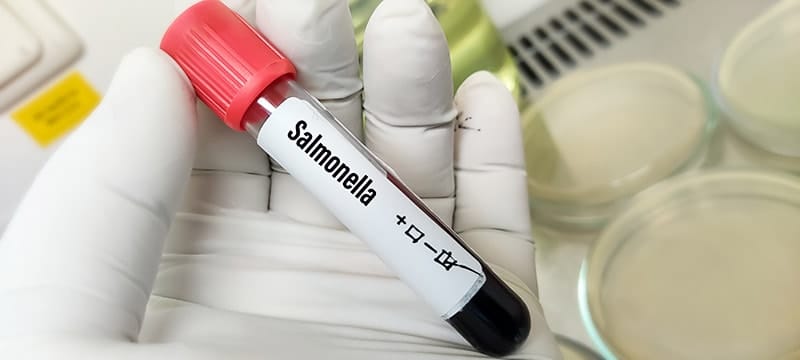Click to Skip Ahead
Salmonella is a major public health concern because it can affect most animals and humans. Salmonellosis is the infection caused by Salmonella bacteria. The disease can be transmitted from animals to humans and vice versa, making it a zoonotic infection (the term for such infections or diseases). Beyond being a public health concern, it is also a pathogen or disease of major concern in pet cats.
Cats can contract the bacteria directly or through contact with the feces of another infected animal. They can also become infected when they eat or drink contaminated food or water. Cats can either show clinical signs of disease from this condition, or they can be carriers (which means they harbor the pathogen but show no signs of illness).
Salmonellosis can progress from acute or chronic enteritis (inflammation of the small intestines) to an infection that spreads throughout the entire body. The diagnosis is made by detecting the pathogen (in this case, the Salmonella bacteria) in your cat’s feces or blood, and treatment consists of administering antibiotics (in mild cases) and supportive care and hospitalization (in severe cases).
What Is Salmonellosis (Salmonella Infection) in Cats?
Salmonella infection, medically called salmonellosis, is a bacterial disease that affects the intestinal tract. The bacteria usually live in animal and human intestines and are eliminated in the stool.
These infections are major public health concerns, but they aren’t common medical concerns in cats. Many cats harbor the bacteria and show no signs of illness whatsoever.
If they do show signs, most healthy cats recover in a few days without specific treatment. However, in some cases, diarrhea can cause severe dehydration, requiring immediate medical assistance because it can lead to your pet’s death. Also, life-threatening complications (septicemia) can occur if the infection exceeds the barrier of the digestive system.
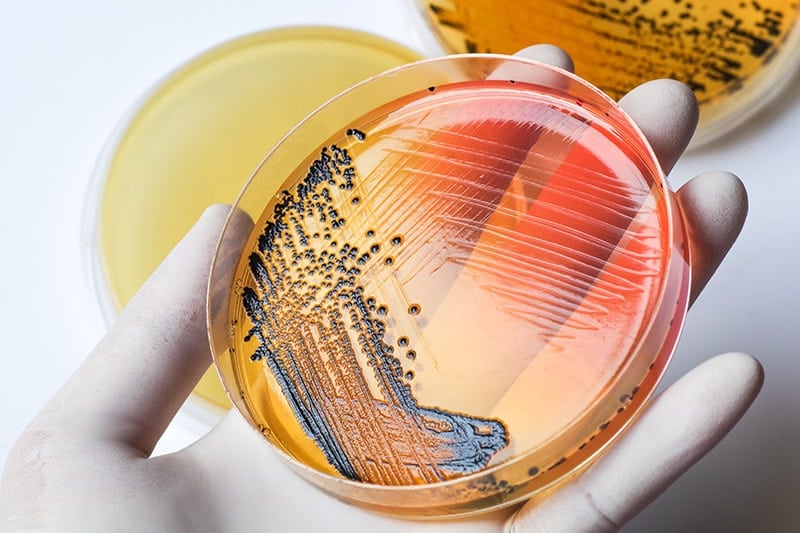
What Are the Signs of Salmonellosis in Cats?
The clinical signs depend on the time when the infection has settled in the body and the severity of the condition. The clinical signs that cats infected with Salmonella can show are as follows:
- Vomiting
- Diarrhea (sometimes with mucus)
- Dehydration
- Decreased appetite
- Weight loss
- Fever
- Increased heart rate
- Spontaneous abortion in the case of pregnant females
- Abnormal vaginal secretions
- Swollen lymph nodes
- Shock
- Skin diseases
- Fever
- Long-lasting diarrhea (3–4 weeks or more) that comes and goes
- Weight loss
- Blood loss
- Infections in the body
- Pale lips and gums
- Spontaneous abortion in the case of pregnant females
- Abnormal vaginal secretions
- Swollen lymph nodes
- Shock
- Skin diseases
- Jaundice (yellow mucous membranes)
- Seizures
- Yellow to dark-red feces
What Are the Causes of Salmonellosis in Cats?
The most common ways that cats become infected include the following.
- Coming into contact with the feces of an infected animal that contain Salmonella
- Eating a food item that is contaminated with Salmonella
In addition, a weak immune system and advanced age can play vital roles in the development of the infection. Salmonella can be killed at temperatures above 70 degrees Celsius (158 degrees Fahrenheit).
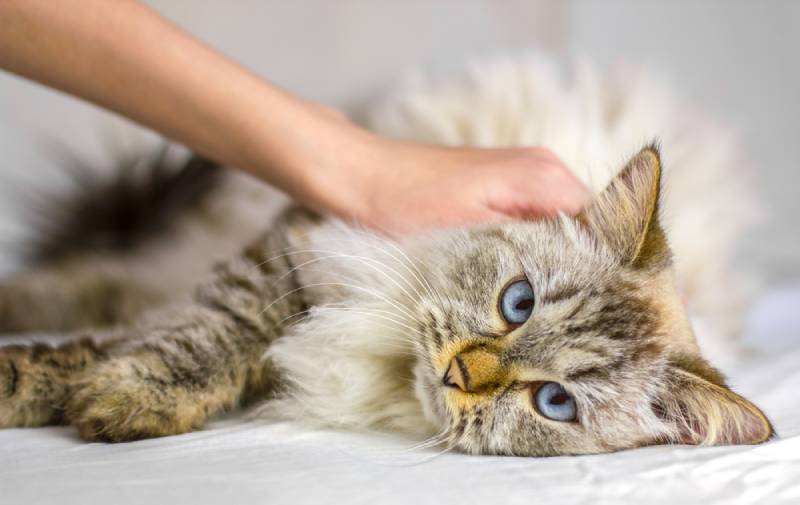
How Is Salmonellosis Diagnosed in Cats?
If your cat shows any of the clinical signs, especially diarrhea, take them to the veterinarian immediately. Prolonged diarrhea can lead to dehydration, lack of appetite, lethargy, and weight loss. In turn, these can lead to the death of your pet if left untreated.
The veterinarian can confirm if your cat is suffering from a severe condition and if there is any cause for concern. The diagnosis of salmonellosis is made after the vet examines your cat and orders a microbiological examination of the feces or rapid testing. The vet can also recommend blood and urine tests.
If the veterinarian suspects that your cat’s clinical signs are due to other conditions, they may recommend symptomatic treatment and supervision.
How Is Salmonellosis in Cats Treated?
Most salmonellosis cases are mild, and the cats can be treated at home according to your vet’s instructions. In severe cases, though, cats will have to be hospitalized and kept under observation.
Cats with severe infections can become dehydrated, so they can only be treated in a veterinary clinic. Also, cats that lose a large amount of blood may need a transfusion.
In general, depending on how severe the infection is, your cat may need the following treatments:
- Rehydration
- Plasma or blood transfusions
- Antibiotics
- Glucocorticoids (to help prevent shock)
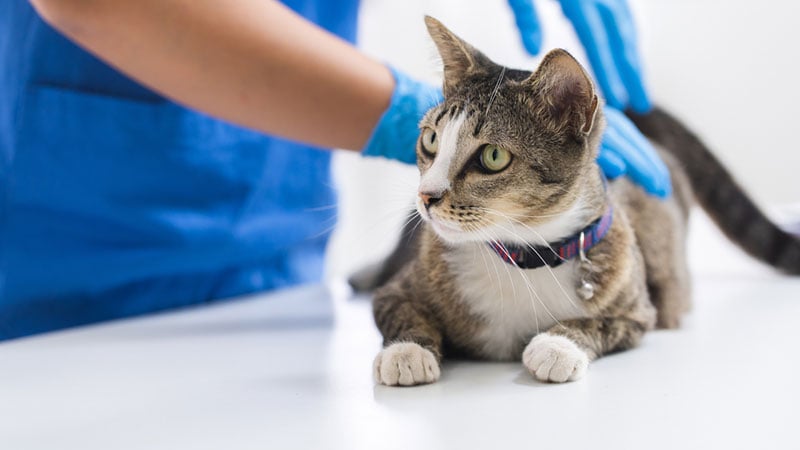
How Do I Care For a Cat With Salmonellosis?
Always follow the instructions and treatments prescribed by the vet. A food restriction may also be recommended/required for your cat. So, make sure you can provide your pet with the proper diet.
If your cat has been diagnosed with Salmonella infection, you must keep them separate from other pets. Other animals or even people can come into contact with them and easily become contaminated. It is also recommended to wash your hands after every interaction with your cat.
Your cat’s hygiene should not be overlooked. Make sure the place your sick cat is occupying stays clean during the entire period of the disease and afterward, as Salmonella can survive for a long time in the environment (several weeks to several months). Be careful to pick up after your cat, and do not leave their feces in the litter box for extended periods of time. Frequent decontamination of the litter box in conjunction with a complete litter change on a daily basis is vital for cats that have an active infection.
How Can I Prevent Salmonellosis in Cats?
The condition cannot truly be prevented, especially if you regularly take your cat outside or they live outdoors. These bacteria can be present anywhere, though especially in dirty and unkempt spaces (such as certain pet shelters). Fortunately, disease episodes in cats are rare. In many cases, ensuring that your cat is vaccinated and healthy, fed a species-appropriate diet, and given routine wellness checkups by your veterinarian makes Salmonella infection a low risk.
You should also aim to keep your house clean; it is more difficult for bacteria to develop when they do not have optimal conditions. You can also accidentally step in the feces of other infected animals and bring Salmonella home on the sole of your shoes, and your family and pets can come into contact with it. Therefore, not wearing your shoes indoors is considered good practice.
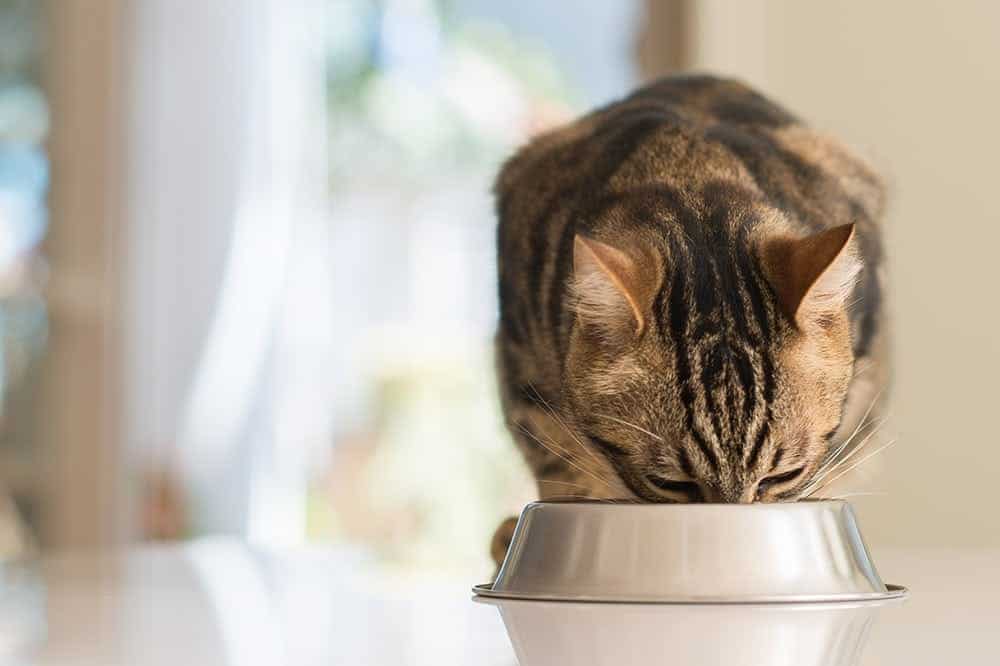
Frequently Asked Questions
How Long Does It Take for a Cat to Recover From Salmonellosis?
Cats infected with Salmonella that have had uncomplicated acute diarrhea usually recover without treatment. However, those suffering from complications will need hospitalization, therapy, and monitoring. Also, cats will shed the bacteria up to 6 weeks after the initial infection. Most cats become healthy carriers of Salmonella, and the elimination of the bacteria in the feces can be reactivated by a weakened immune system, other infections, or stress.
Can Indoor Cats Get Salmonellosis?
Indoor cats can become infected with Salmonella by eating contaminated food or coming into contact with other infected animals and in rare cases, infected humans. They can also become infected if you step in contaminated animal feces and then bring this home on your shoes.
Conclusion
Salmonellosis is an infection caused by the bacteria Salmonella spp. Although this disease is found in many animals (and humans), incidences of salmonellosis in cats are relatively low.
Clinical signs are usually mild but can worsen and lead to severe diarrhea that lasts for a long time, along with blood loss, jaundice, fever, dehydration, vomiting, shock, and other systemic issues. If your cat has diarrhea or seems unwell in general, you should take them to the veterinarian for proper diagnosis and treatment.
Featured Image Credit: Babul Hosen, Shutterstock

